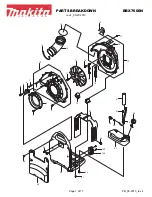
2. Always make sure that the surfaces of the spacer and working electrode are dry and free
from particulate matter before assembling the cell.
3. Clean fingerprints from spacer and electrode surfaces with a soft tissue soaked in acetone
or methanol. If the auxiliary electrode needs to be cleaned, do not apply force, which could
damage the electrode surface.
4. Except for BDD electrodes, make sure that the working electrode has a mirror-like
appearance before installation.
Notice:
The BDD electrode has a thin crystalline blue/greyish surface. This
electrode should not be polished. Polishing this electrode damages the active
surface and leads to loss of performance.
5. If the flow cell is not in use and removed from the LC system, we recommend that you
disassemble the cell and clean all surfaces.
Note:
The construction of the FlexCell is such that both fluid connections can be used as
either inlet or outlet.
Notice:
Never switch on the flow cell if:
• The (black, red, and blue) cell cable is not correctly connected.
• The cell is only partly (or not at all) filled with mobile phase.
• The cell is filled with solutions that do not contain electrolytes.
Damage to the working electrode or the electronics may occur.
Warning:
The ISAAC reference electrode requires the presence of 2 mM
chloride ions (KCl or NaCl) in the mobile phase. Add and equilibrate before
installation.
Warning:
Use proper eye and skin protection when working with solvents.
14.3 Installation
Maximum detection stability is attained when not only the flow cell but also the HPLC column is
incorporated in the detector oven. The detector has an integrated Faraday cage and an
accurately temperature-controlled oven compartment, ensuring stable working conditions.
Installing the flow cell and column within such a controlled environment is the minimum
requirement for high-quality LC-EC trace analyses.
December 16, 2021, 715007395 Ver. 00
Page 110
















































